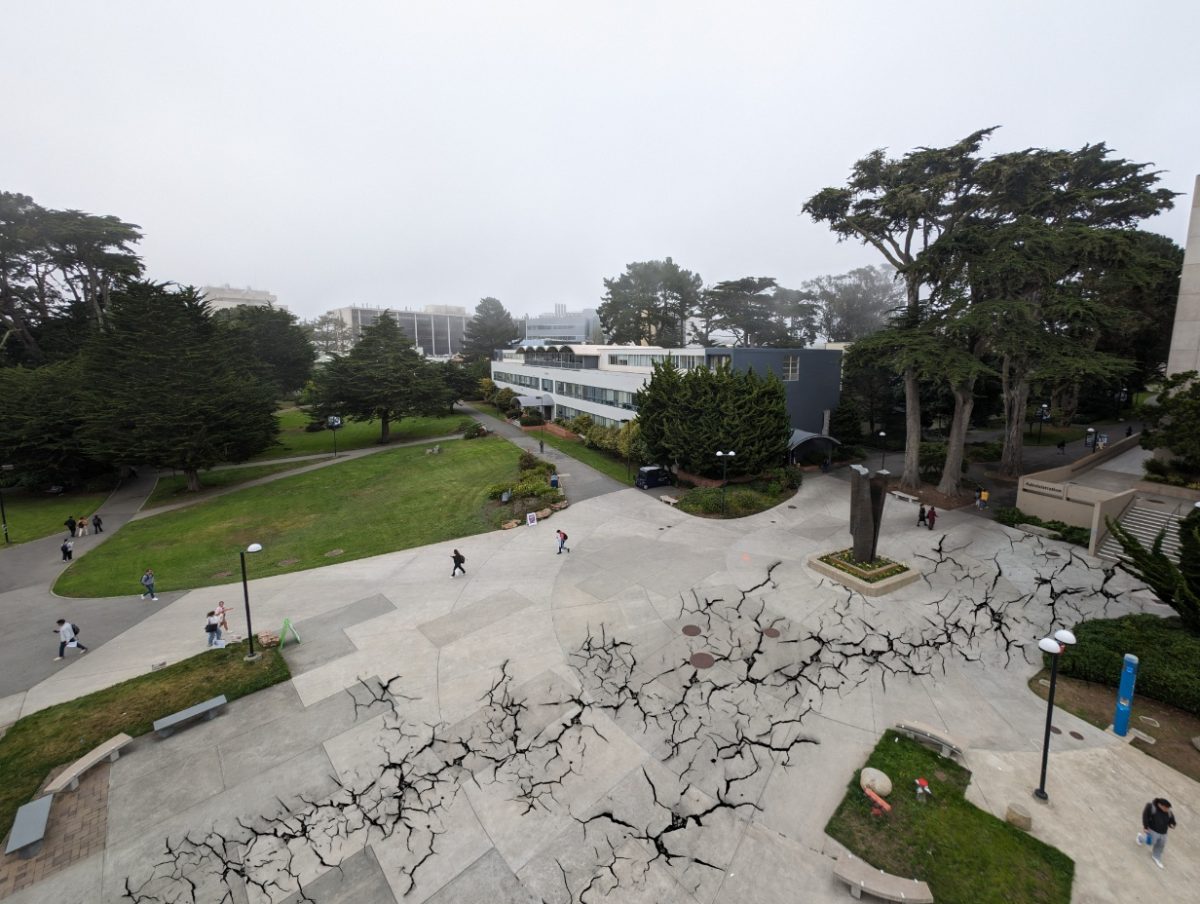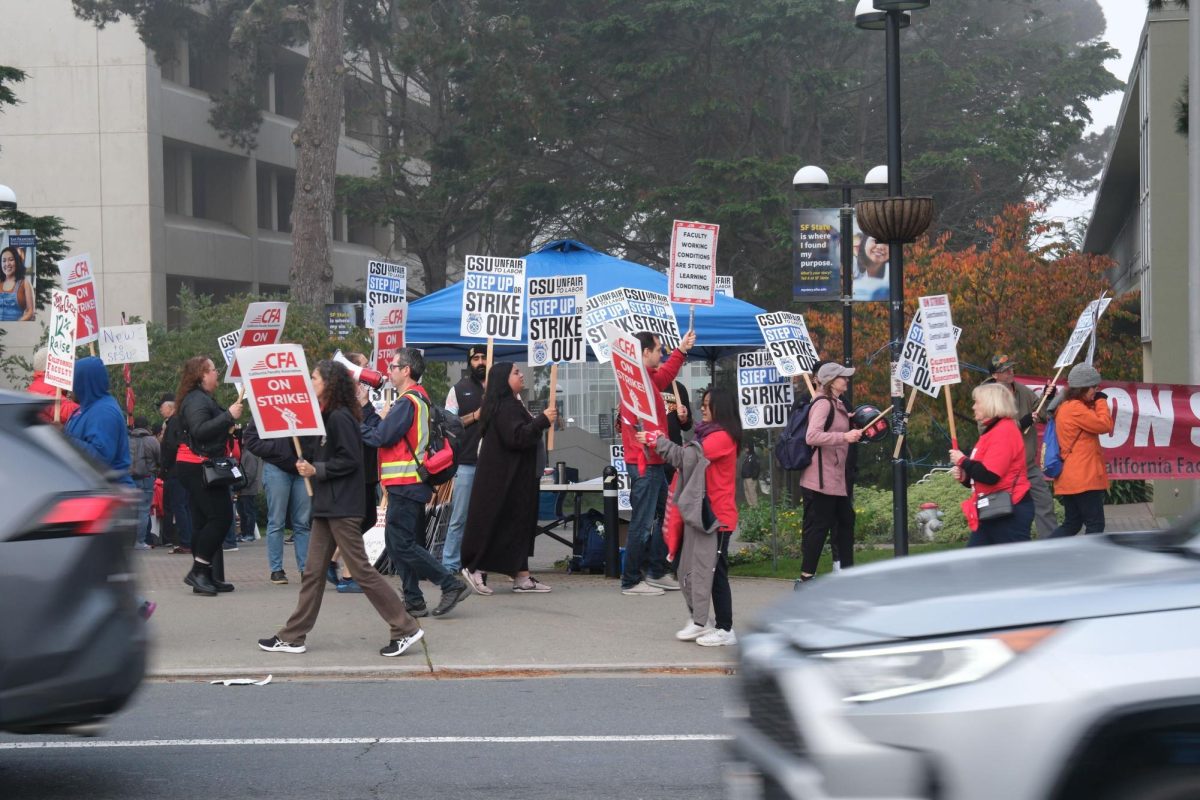It was a muggy day in the Bay Area on Oct. 17, 1989. Californians were going about their daily lives –– attending school, driving their commute home, visiting the dentist, attending the third game of the World Series between the San Francisco Giants and the Oakland Athletics at Candlestick Park.
Until, at 5:04 pm, time seemed to stop as asphalt highways began to weave like snakes. Buildings began to crumble amongst workers and an entire stadium of baseball fans felt the earth move -– for nearly 15 seconds. This Bay Area quake registered at a 7.1 magnitude, one of the state’s largest.
There were 5,000 earthquakes in the state of California last year, including three in October. It has been predicted that the next big one will likely occur somewhere in the next thirty years, according to the United States Geological Society (USGS). Given these factors, it is important that people know what to do when the ground starts to rumble. While some things cannot be controlled, such as road or building collapses, there are many things people can do to stay safe and minimize injury.
“Tips to stay safe now include drop, cover and roll,” said Hope Kaye, the director of the Office of Emergency Services at San Francisco State University.
Years ago, the advice was to tell people to run for the door jamb or under a table.

“Now, the counsel is to remain in place to ensure moving objects don’t injure,” Kaye said.
California is in a region that has many fault lines. In fact, the San Andreas fault is one of the largest in the world. It runs 800 miles down in the middle of the state from the Salton Sea to Camp Mendocino. It basically carves the state in two. It runs near some of the most populated areas in California including Daly City, Point Reyes and Bodega Bay –– all cities that sit right on the fault line. The USGS predicts that if a quake were to hit, thousands could be affected.
What to do during a quake
According to Jonathan Stewart, professor at UCLA’s Samueli School of Engineering, the best thing to do is drop, cover and hold on.
“‘Drop’ means you get down on your knees,” Stewart said. “‘Cover’ means you take one hand and put it behind your head to sort of shield yourself if something falls, so it hits your forearm and not your head. ‘Hold on’ is where you take your other hand and, if you can, grab onto a table leg, or something like that, to keep yourself steady,” he said.
“People should not run outside — in a place like California where buildings are generally well-constructed, running outside is a good way to get hurt,” Stewart said.
The science of earthquakes
According to seismologist Susan Hough from USGS, it’s all about plate tectonics. Earthquakes occur when there is a shift along faults. The sudden movements are typically a reaction to a buildup of stress. The outer layer of the earth is composed of 15 large slabs called tectonic plates. They move just about a few centimeters a year, which causes deformation and then triggers quakes.
There are three common theories ascribed to the plates’ moviments: mantle convection currents which are warm currents that carry plates along like a conveyor belt; ridge push, which causes newer, warm plates to push away from the older, colder plates; and slab pull with is a theory that says colder older plates sink while pulling the newer, warmer plates along creating movement. The latter is the most popular theory as to why plates move, according to the British Geological Society.
“We don’t know why earthquakes occur precisely when they do, beyond a slow build-up of stress that eventually causes faults to break,” Hough said.
Future of Earthquake Prediction
“We can assess the expected long-term rates of earthquakes in an area from geologic and other studies,” Hough said. ”There’s no way to predict specifically when an earthquake will strike.”
While prediction is not expected, monitoring networks have gotten a lot better, with more sophisticated instruments that send digital data that is analyzed very quickly by modern computers. The USGS now produces maps that show the distribution of shaking in an earthquake –– in 1989, the rapid products could only show epicenter and magnitude.
Data from modern seismic networks are also now used for early warning systems, which aim to give people a few seconds to a few 10s of seconds heads up that shaking is on the way. Early warning is not a prediction but systems record an earthquake in progress and send a rapid alert to people in other areas.
“It is not possible to predict, ‘There’s going to be an earthquake Friday’ or something of that sort,” Stewart said. “What we can do is identify the locations of faults that are likely to produce earthquakes, evaluate the approximate rates and sizes of future earthquakes, and predict the ground shaking and effects of those events. These predictions are for long-time horizons, and are expressed as a probability of an event or a certain level of shaking being exceeded in a time frame like 50 years or so.”
SF State will be Ready
The Office of Emergency Services at SFSU is responsible for preparing for all kinds of emergencies including earthquakes. The team has actively been working to gather supplies such as food, water and first-aid gear in case of an event. They also have been actively training representatives, or building response coordinators (BRCs), across campus to support during an earthquake, says Kaye.
“We can’t predict when an earthquake is going to happen,” Kaye said. “Our goal is to spread a far and wide net for training. We have developed a system-wide general training effort to develop online general emergency training available at CSU.learn.”
These BRCs undertake exercises and drills on a regular basis so they are ready to guide students and faculty when in need. They are also trained by firefighters and medical experts to ensure they are prepared to assist after a quake. Many of them also go through CPR training. These representatives work with the emergency teams on campus to help triage on a large scale.
In terms of supplies, there is an ongoing and active program to secure food, water and medical supplies.
“We have an agreement with (supplier) Tedesco…to provide food and water for 5,000 students via emergency contracts,” she said. “There is a dedicated container on site for this,” Kaye said. “And our goal is to match it -– our goal is to have it by 2025.”
The buildings on campus are solid in the event of a quake. The newer buildings are very sound in terms of safety and most of the older buildings have been upgraded to meet the city and state’s legal requirements for safety.
“New construction is top of the line,” Kaye said. “We have some older buildings but they are all or almost all seismically retrofitted.”
For Californians, earthquakes are the price to pay to live in this beautiful state. While the future of predicting quakes seems unlikely, residents can prepare and react appropriately when they occur.
“Personally, I doubt it will ever be possible, but there’s no way to know,” Hough said. “Fifty years ago, Charles Richter, a lifelong skeptic of earthquake prediction research, was asked the same question, and he said, ‘I don’t know, nothing is less predictable than the development of an active scientific field.’”







